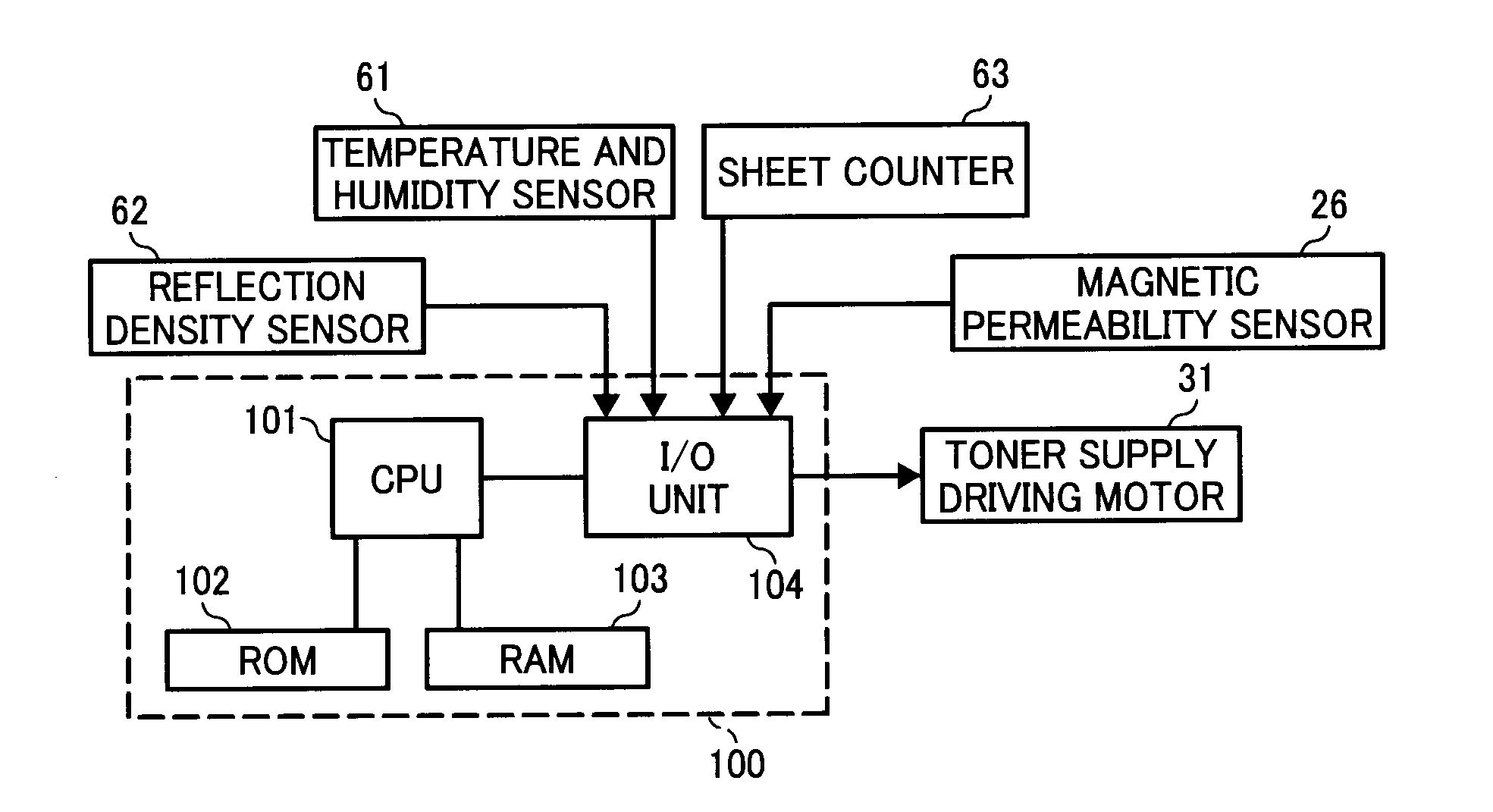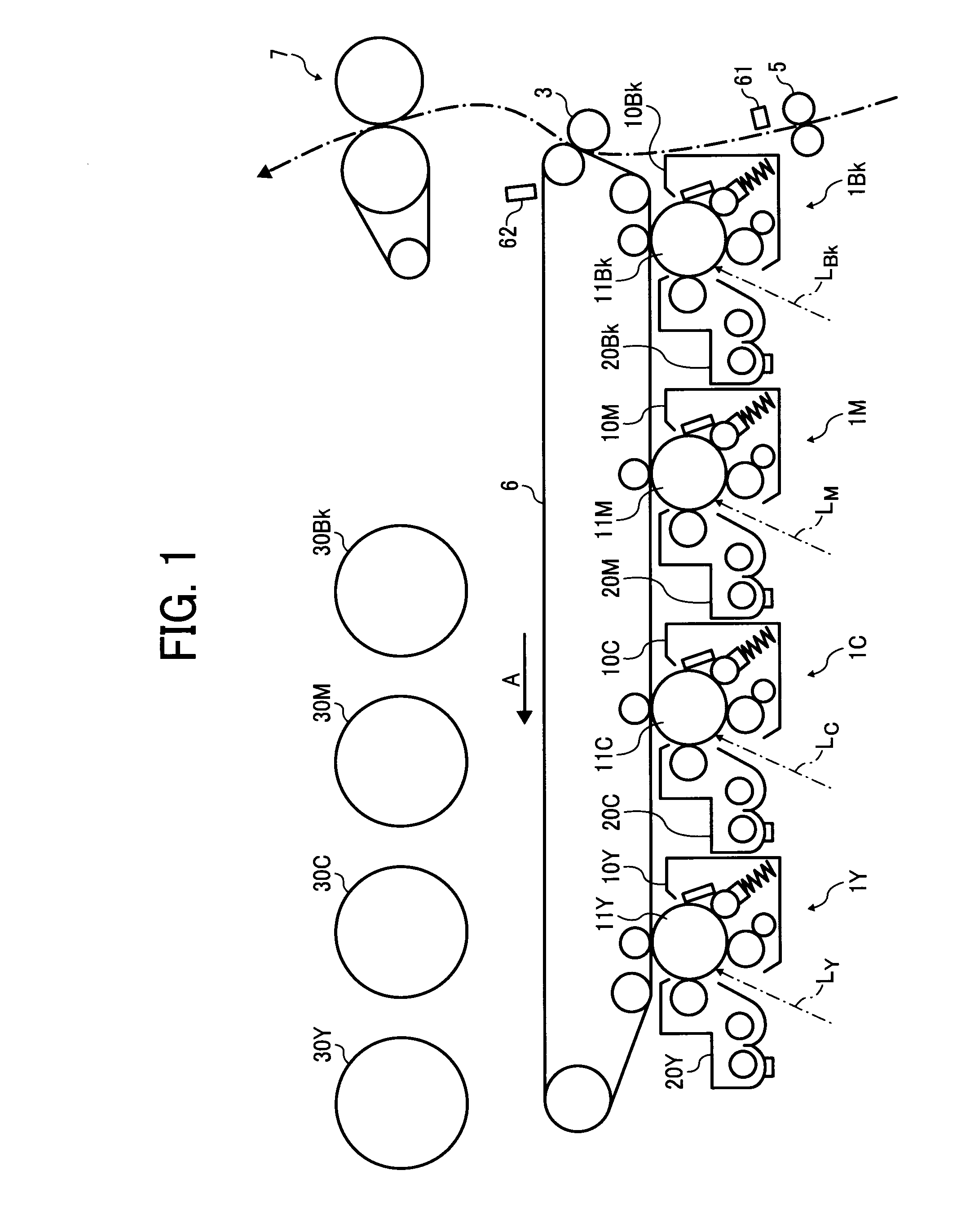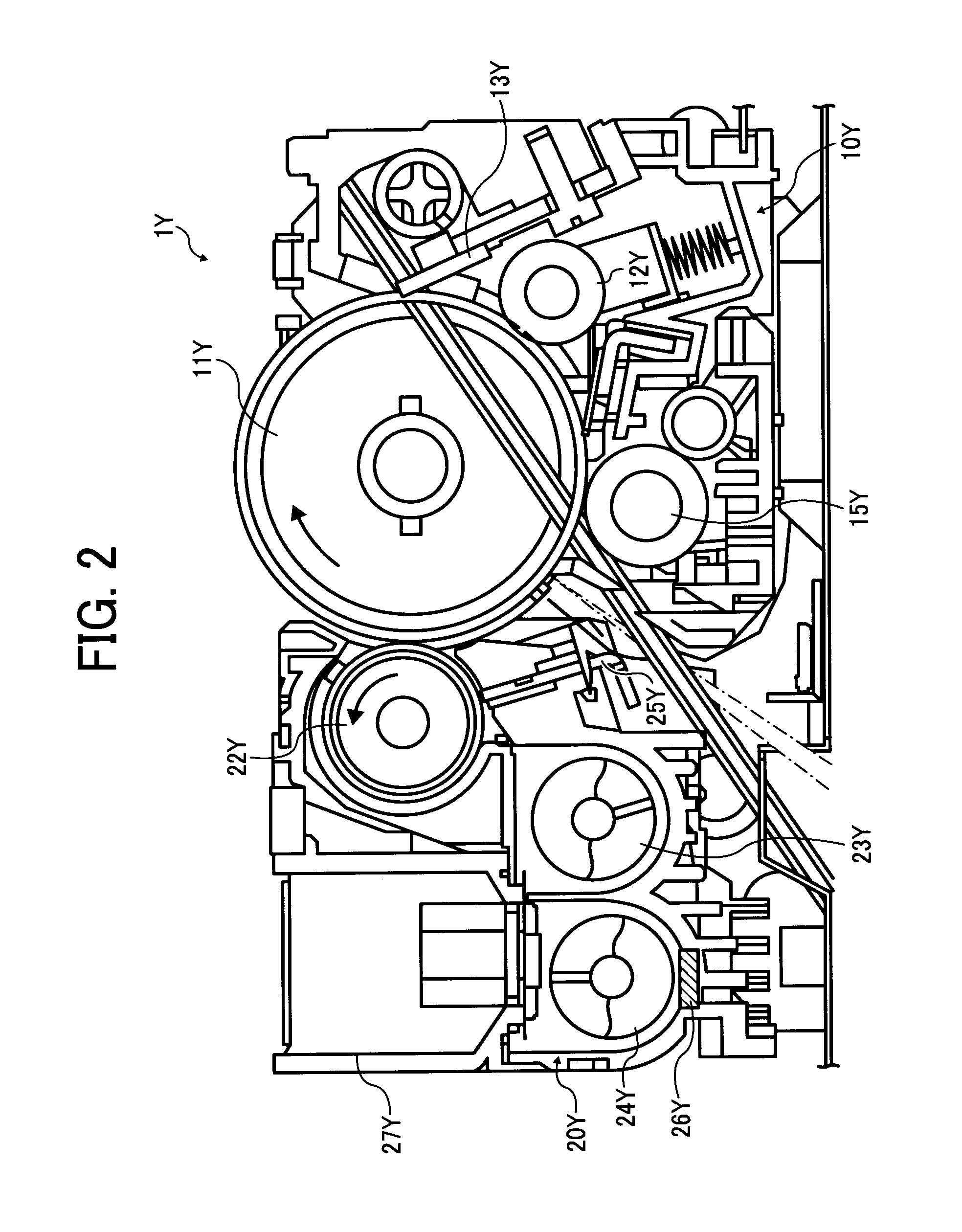Image forming apparatus and image density control method
a technology of image density and forming apparatus, which is applied in the direction of electrographic process apparatus, instruments, optics, etc., can solve the problems of image density rise, image density decrease, image density increase, etc., and achieve the effect of constant image density
- Summary
- Abstract
- Description
- Claims
- Application Information
AI Technical Summary
Benefits of technology
Problems solved by technology
Method used
Image
Examples
experiment 1
[0096]In experiment 1, the target output value adjustment described above was performed under standard environmental conditions of a temperature of 23° C. and a humidity of 65%. An initial development γ, which was a value of development γ before experiment 1 was started, was within a range of from 0.6 mg / cm2 / kV to 1.2 mg / cm2 / kV. This experiment 1 was to check image density consistency when the image area ratio is increased by 20% from zero for every 20 sheets. In experiment 1, the image area ratio moving average was calculated using formula 1 described above, the cumulative number of sheets N was set to 10, and the target image density was set to 1.4.
[0097]FIG. 9 is a graph illustrating results of experiment 1. Although FIG. 9 illustrates the results when the initial development γ was within the range of from 0.6 mg / cm2 / kV to 1.2 mg / cm2 / kV, similar results were achieved even when the initial development γ was out of this range. In FIG. 9, a horizontal axis shows the number of output...
experiment 2
[0099]In experiment 2, the target output value adjustment was performed under conditions similar to those of experiment 1 with an initial development γ of 1.8 mg / cm2 / kV. FIG. 10 is a graph illustrating results of experiment 2.
[0100]As illustrated in FIG. 10, in a case in which the development γ was as high as 1.8 mg / cm2 / kV, image density increased when the image area ratio was 20% or more.
[0101]A reason for the rise in image density along with the increase in the image area ratio when development γ is as high as 1.8 mg / cm2 / kV is presumed to be as follows: When the development γ is higher, the toner in a developing system is not charged relatively easily and thus it is insufficiently charged. In this state, developability is higher, and accordingly development γ is higher. In such a state in which the toner is not charged relatively easily, the amount of the toner insufficiently charged increases in the developing system when images having higher image area ratios are output and a la...
experiment 3
[0103]In experiment 3, the target output value adjustment was performed under conditions similar to those of experiment 1, and the initial development γ was 0.4 mg / cm2 / kV. FIG. 11 is a graph illustrating results of experiment 3.
[0104]As illustrated in FIG. 11, image density decreased when the image area ratio is within a rage of from zero to 50%.
[0105]Presumably, the decrease in image density in a case in which development γ is as low as 0.4 mg / cm2 / kV and the image area ratio is lower occurs because the toner in the developing system is easily charged and thus sufficiently charged when the development γ is lower, developability decreases, and accordingly development γ decreases. When images with lower image area ratios are output in a state in which the toner in the developing system is easily charged, the amount of toner supplied to the developing system is lower, causing the toner to be excessively charged in the developing system before a subsequent image formation. Thus, image d...
PUM
 Login to View More
Login to View More Abstract
Description
Claims
Application Information
 Login to View More
Login to View More - R&D
- Intellectual Property
- Life Sciences
- Materials
- Tech Scout
- Unparalleled Data Quality
- Higher Quality Content
- 60% Fewer Hallucinations
Browse by: Latest US Patents, China's latest patents, Technical Efficacy Thesaurus, Application Domain, Technology Topic, Popular Technical Reports.
© 2025 PatSnap. All rights reserved.Legal|Privacy policy|Modern Slavery Act Transparency Statement|Sitemap|About US| Contact US: help@patsnap.com



